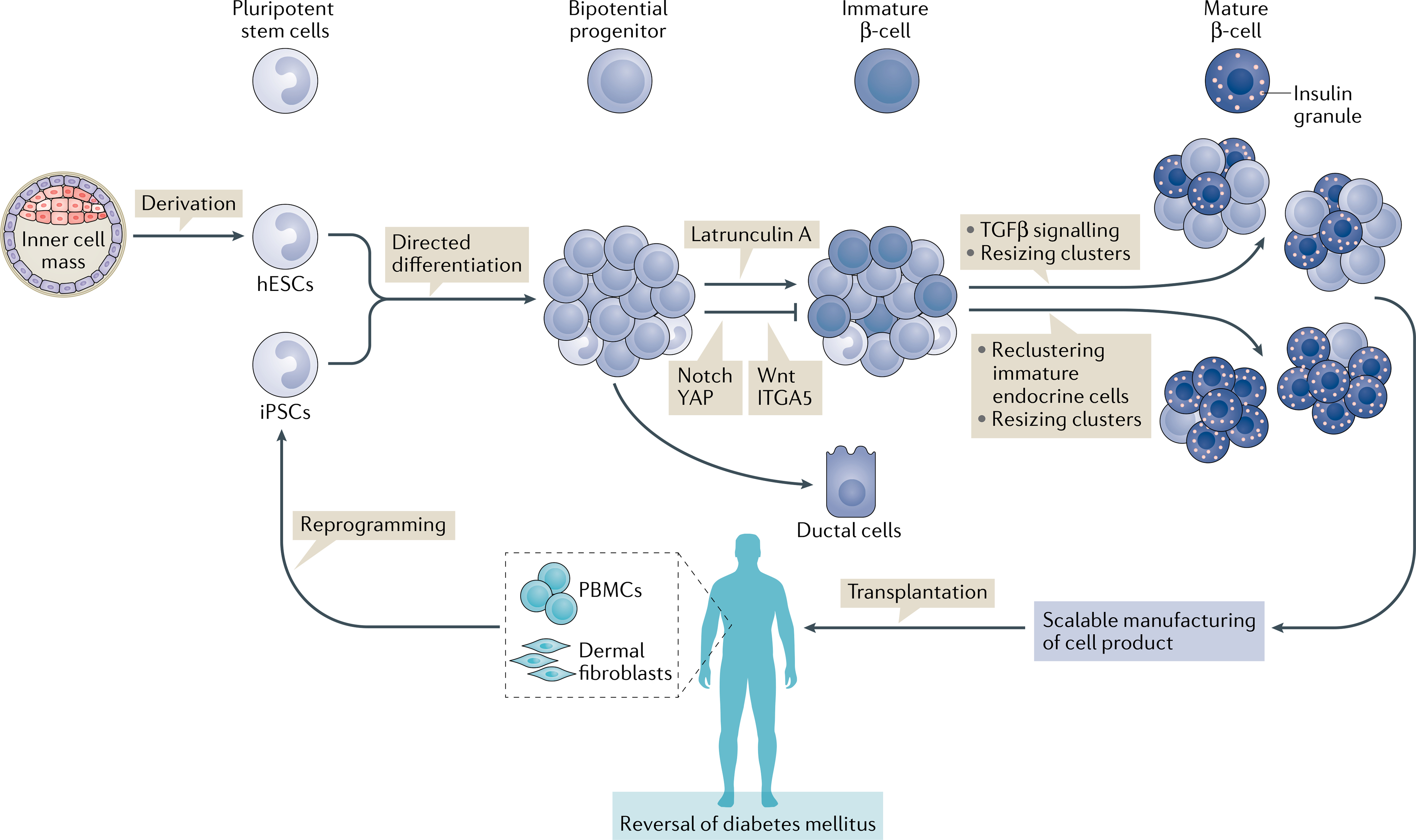Fig. 1 |. Advances in the generation of mature β-cells from hPSCs and their application for diabetes mellitus cell therapy.

Human pluripotent stem cells (hPSCs) include embryonic stem cells (ESCs) and induced pluripotent stem cells (iPSCs). ESCs are derived from the inner cell mass of blastocyst stage embryos and induced pluripotent stem cells (iPSCs) are obtained by reprogramming somatic cells of patients such as peripheral blood mononuclear cells (PBMCs) or dermal fibroblasts. hPSCs can be converted to mature β-cells by directed differentiation through modulation of signalling pathways active during human pancreas formation. Efforts from 2015 onwards have focused on further promoting endocrine commitment from bipotential progenitors by inhibition of actin polymerization126, YAP125,145, Wnt146, ITGA5125 or Notch, and by adding steps that closely mimic islet formation in vivo to the final stage of differentiation. Isolation of immature endocrine cells and re-aggregation into smaller islet-like assemblies promotes functional and metabolic maturation52. New surface markers have been discovered that allow enrichment of endocrine cells50. Resizing of clusters and removal of TGFβ inhibitor after re-aggregation causes β-cells to acquire dynamic insulin secretion properties53. Ultimately, mature β-cell products need to be manufactured at the clinical scale and transplanted in immunoprotective devices and/or with immunosuppression to reverse diabetes mellitus in patients. hESCs, human ESCs.
